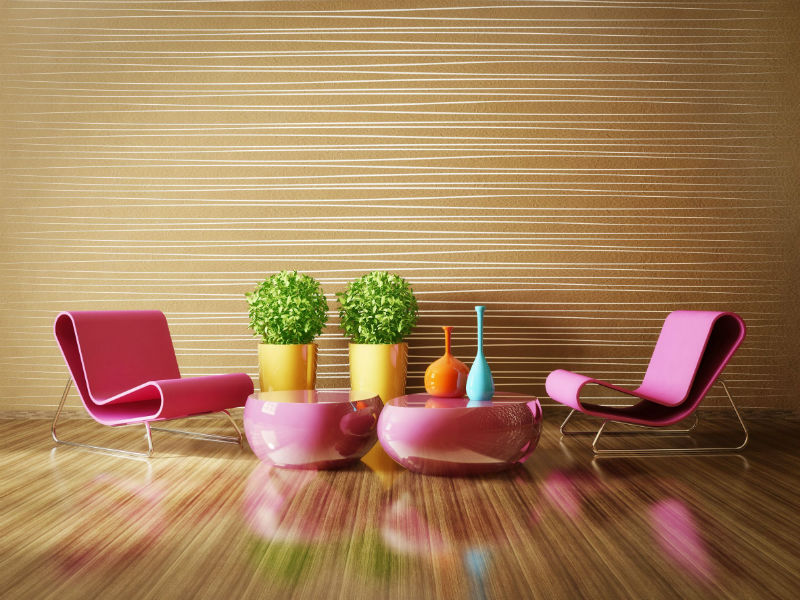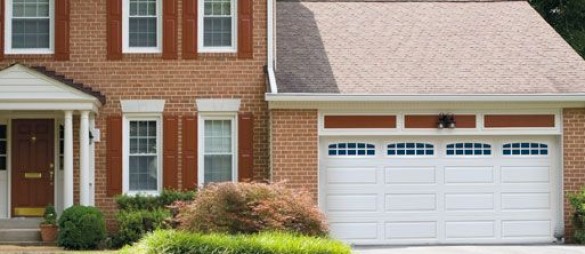There are so many ways that you can cover your walls when you’re redecorating and you may not even realize how many amazing choices that you have available to you! Learn about all the creative ways that you can adorn your walls with this handy alphabetical guide.
B
Borders: Created using ribbons, strips of paper, and virtually anything else that complements the wall paper and creates a panel or border within the room. It is also used to frame doorways and other such areas and is applied with adhesives that are basically the same as what you use for most wallpaper. The borders are likely to need precise trimming before they are applied.
C
Cork: While relatively pricey, this kind of wall covering is perfect for offices and playrooms. Sliced cork veneers attach to a paper backing and are glued to the wall for a very easy installation. It’s durable, easy to clean, stays on well even in areas of high humidity, comes in all kinds of styles or can be colored or styled to your desire, and you can pin practically anything to directly to the wall on which it is hung.
Crasscloth: This is a rarely used specialist wall covering that incorporates different kinds of natural grasses that are woven together to create the hanging. They are then attached to a paper backing which is what is stuck to the wall. The grass is delicate and this can make it difficult to hang and the specialty distinction and intricacy makes this one of the more expensive options.
F
Felt: Relatively pricey and very heavy as well as a bit awkward to hang because of the size of the walls. It comes in many different colors and the felt comes with paper backing that is stuck to the wall after paste is applied (to the wall and not the paper backing).
Flock: Different fibers provide style and texture to areas of a paper or vinyl wallpaper. It’s hung with an easily mixed paste much like its more plain paper and vinyl fellows.
Foamed Vinyl: Vinyl wallpaper that has been puffed out or “blown” to look like other textures. Most commonly used to simulate the look of ceramic tiles. It’s attached with an adhesive applied to the backing and is easily applied and removed.
Foil: Foil on top of a paper backing that is usually coated in plastic or vinyl. It’s metallic and shiny but should not be used near any kind of outlet, light switch cover, or wiring. The foil may conduct electricity and interfere with these things. Apply with an adhesive onto the paper backing and then stuck to the wall.
R
Relief: There are several different grades of relief for this type of wall covering and each one provides a different texture, different style, and is applied in a specific grade. Usually, relief papers are meant to be painted over and are often used to cover up cracked or slightly damaged walls.
S
Silk: Another unique specialist wall covering that can be trouble to hang because of the danger of damaging during the process. Silk that is solid colored or printed with a pattern has a paper backing which is what is pasted to the wall. This is a pricey option and not very practical.
Sisal: Made of different strips of fabric that gives the effect of a sort of open weave. Occasionally, the paper backing that the fabric is stuck to has its own color and style to provide an aesthetically pleasing background for the spaces between the woven strips. The paper backing is stuck to the wall with an adhesive.
V
Vinyl (printed): Comes in all kinds of colors and styles of plastic film that has a paper backing which is stuck to the wall. It’s easily cleaned, applied, and removed and is relatively inexpensive. This should be hung with a paste that includes antifungals because dirt and other things can get caught between the plastic and paper which causes bacterial buildup or mold. The antifungal combats this.
W
Whites: This is the name given to plain paper, lining paper, and sometimes woodchip paper that is used to cover up damaged or cracked walls. It is very inexpensive and generally meant to be covered up by something else like more stylish wall covering or paint. Whites give your walls a uniform and smooth look so that if there is some slight damage, it is easily covered behind this lining.
Woolstrand: This is a specialist wall covering that is made by several strands of wool woven together to look like a textured paper. There is a smooth paper backing on the back used to paste it to the wall. The wool is difficult to clean, relatively pricey, and when it is hung great care must be taken not to get any paste or adhesive on the wool strands.
Each kind of wall covering can be paired with the right tiles or flooring that complements its unique properties. You can coordinate or mix and match to create the look that’s perfect for whichever room you are decorating. Note the care needed for each type of wall covering so that you can hang the best material for the room. For example, woolstrand is probably not good for a kitchen or bathroom where splashes and stains are more likely. Talk your designer today for help deciding which material will work for the rooms that you want to decorate!

